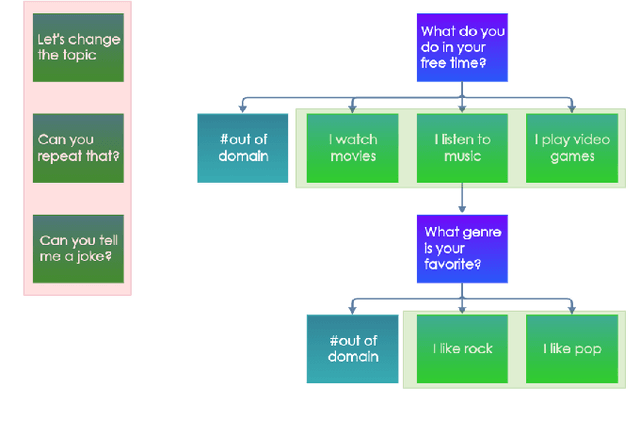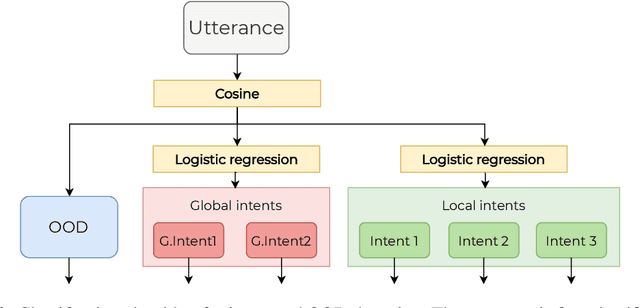Van Duy Ta
Alquist 4.0: Towards Social Intelligence Using Generative Models and Dialogue Personalization
Sep 16, 2021



Abstract:The open domain-dialogue system Alquist has a goal to conduct a coherent and engaging conversation that can be considered as one of the benchmarks of social intelligence. The fourth version of the system, developed within the Alexa Prize Socialbot Grand Challenge 4, brings two main innovations. The first addresses coherence, and the second addresses the engagingness of the conversation. For innovations regarding coherence, we propose a novel hybrid approach combining hand-designed responses and a generative model. The proposed approach utilizes hand-designed dialogues, out-of-domain detection, and a neural response generator. Hand-designed dialogues walk the user through high-quality conversational flows. The out-of-domain detection recognizes that the user diverges from the predefined flow and prevents the system from producing a scripted response that might not make sense for unexpected user input. Finally, the neural response generator generates a response based on the context of the dialogue that correctly reacts to the unexpected user input and returns the dialogue to the boundaries of hand-designed dialogues. The innovations for engagement that we propose are mostly inspired by the famous exploration-exploitation dilemma. To conduct an engaging conversation with the dialogue partners, one has to learn their preferences and interests -- exploration. Moreover, to engage the partner, we have to utilize the knowledge we have already learned -- exploitation. In this work, we present the principles and inner workings of individual components of the open-domain dialogue system Alquist developed within the Alexa Prize Socialbot Grand Challenge 4 and the experiments we have conducted to evaluate them.
Alquist 3.0: Alexa Prize Bot Using Conversational Knowledge Graph
Nov 06, 2020



Abstract:The third version of the open-domain dialogue system Alquist developed within the Alexa Prize 2020 competition is designed to conduct coherent and engaging conversations on popular topics. The main novel contribution is the introduction of a system leveraging an innovative approach based on a conversational knowledge graph and adjacency pairs. The conversational knowledge graph allows the system to utilize knowledge expressed during the dialogue in consequent turns and across conversations. Dialogue adjacency pairs divide the conversation into small conversational structures, which can be combined and allow the system to react to a wide range of user inputs flexibly. We discuss and describe Alquist's pipeline, data acquisition and processing, dialogue manager, NLG, knowledge aggregation, and a hierarchy of adjacency pairs. We present the experimental results of the individual parts of the system.
 Add to Chrome
Add to Chrome Add to Firefox
Add to Firefox Add to Edge
Add to Edge